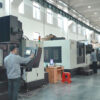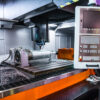Rapid
3D Printing Services
Additive manufacturing for functional prototypes & production parts.
- Competitive FDM, SLA, SLS services
- 20+metals and plastics ,10+ surfaces finishes
- No minimum order quantity
- Global delivery as fast as 3 days

Additive Manufacturing - Industrial 3D Printing
Keyanng offers high-quality 3D printing (Additive Manufacturing) services, including FDM, SLA,PolyJet and SLS. This allows for the 3D printing of plastics and metals and provides options for prototyping and production.
3D printing is a great way to create one-off parts or small batches that can create complex geometries that cannot be achieved using traditional manufacturing processes.
Why 3D printing with Keyanng
- Rapid & Cost-effective Quotation
Just upload your project files and specify requirements and we’ll provide you with a quote within 24 hours. With abundant manufacturing resources, we are confident to provide the most cost-effective price for your project.
- Strong Capabilities & Flexible Options
keyanng has a 3D printing factory in Shenzhen, China. Our capabilities cover major 3D printing services including FDM, Polyjet, SLS and SLA. We offer a wide range of material and post-processing options.
- Short Lead Time & High Quality
Delivery times are the pride of our 3D printing services. Keyanng can help you with project proofing in a few hours and reduce lead time to 3 days. For every order, we will provide SGS, RoHS material certification, full size inspection report according to your requirements.

Our 3D Printing Capabilities
Keyanng provides online 3D printing services for rapid prototyping and mass production. Our customers span various industries and companies, including automotive, construction, aerospace, defense, electronics, machinery, industrial automation, medical, healthcare, consumer products, oil and gas, and more. Accelerate your product development and manufacturing processes with our industry-leading metal and plastic 3D printing services and 3D printed parts. We will find the best 3D printing solution for your project while maintaining quality.
FDM(fused deposition modeling)
The FMD heating head heats the hot-melt material (ABS, PA, POM) to make it appear semi-fluid state; Then, the heating head will move along the two-dimensional geometric trajectory confirmed by CAD under the control of the software, and at the same time, the nozzle will extrude the material in the semi-fluid state. The material will be solidified instantaneously to form a thin layer with a contour shape.
SLA(Stereolithography)
SLA is to use a laser with a specific wavelength and intensity under the control of a computer to scan the liquid photosensitive resin with the layered cross-section profile as a trajectory to connect the points, and the thin resin layer in the scanned area undergoes photopolymerization to form a thin-layer cross-section entity of the part. And then, move the worktable, apply a new layer of liquid resin on the surface of the cured resin, scan and cure the next layer, and repeat until the entire part prototype is manufactured.
SLAs are used to produce marketing samples, packaging mockups, and non-functional concept samples.
PolyJet
PolyJet 3D printing technology is an ultraviolet (UV) light-curing jet of liquid photosensitive resin as thin as 16 microns (0.0006 μm) to build models layer by layer. And with extremely complex geometry, realistic details, and smooth surfaces. You can even create the same molded part and model by printing multiple materials, multiple colors, and different hardnesses in one shot. The speed of parts produced by the PolyJet rapid prototyping process using high-resolution inkjet technology is an excellent choice for demonstration models.
SLS(Selective Laser Sintering Rapid Prototyping)
First, spread a thin (sub-millimeter) layer of raw powder on the bench. Then, according to the hierarchical two-dimensional data, under the control of the computer, the laser beam passes through the scanner at a certain speed and energy density. The laser-scanned powder is sintered into a solid sheet of thickness, and the unscanned areas remain loose powder. After one layer is scanned, the next layer is scanned. The table is raised according to the thickness of the object section, the dusting roller is dusted again, and a new layer is scanned. Repeat this until all layers have been scanned. Parts are obtained after removal of excess powder and proper post-processing (eg grinding, drying, etc.).
- 3D printing standards
If you want the best functional part prototypes, 3D printing is the best service. At Keyanng we offer you the best 3D printing technologies such as FDM, SLA, SLS, Polyjet. For other related technologies, we have strong partners to supply, please contact us.

Advantages of 3D printing
Affordability
Since 3D printing uses only the required material and needs no tooling, it is one of the most affordable manufacturing processes for one-off parts or small batches.
geometries
trongse 3D printers create parts layer by layer using a computer-controlled nozzle, they can be used to create highly complex shapes, including complex interior geometries.
Efficiency
Once a part has been designed using CAD software, it can be printed in a matter of hours, without a lengthy setup procedure.
Adaptability
Because 3D printed parts require no tooling, there is less risk involved when creating a part. If a fault is discovered after printing, it can be amended digitally without the need to replace expensive tooling.
Environmental friendly
Although 3D printers require power to operate, there is generally no material wastage involved. Subtractive processes like machining, on the other hand, produce waste material.
Plastic 3D Printing FAQ
3D printing, otherwise known as additive manufacturing, is a manufacturing process that builds a part layer by layer. A computer sends instructions to the 3D printer, which deposits or hardens material in a preprogrammed pattern, creating layers in succession.
There are several kinds of 3D printer, some of which are used to print plastic parts, others to print parts made from metal or other materials. While these various 3D printing technologies are diverse, they have certain features in common.
3D printing has revolutionized manufacturing by giving businesses access to a one-step manufacturing technology. 3D printers can be set up in offices and small workspaces, and require minimal training to operate. Moreover, startup costs are incredibly low, since materials are affordable and can be purchased in small quantities.
- First, a 3D digital file of the object you want to print is required. There are three different ways to obtain 3D digital models: design, scan and download. CAD is a common software for designing 3D models, and popular CAD software includes AutoCad, SolidWorks, Tinkercad, etc. 3D scanning is a technology that analyzes real-world objects and creates digital replicas. You can also download one from the 3D library.
- Once you have the 3D model, you need to convert it to the appropriate file format. The most common 3D printing file format is STL, which is an available file extension. Alternatives to STL are .OBJ and .3MF, these formats do not contain color information, if you need color 3D printed objects you can use .X3D, .WRL, .DAE and .PLY. Make sure the file is printable.
- The system analyzes the file and then generates G-code that tells the machine how to perform the operations step by step. G-code is the most widely used CNC programming language for CNC machines and 3D printers.
- Use a 3D printer to complete the printing process according to automatic G-code instructions.
- Remove the finished 3D printed part from the printer. For some industrial 3D printers, removing 3D prints requires specialized skills and specialized equipment.
- In some cases, additional steps or post-processing are required to complete production. For example, various surface treatments are used to improve the aesthetics and mechanical properties of 3D printed components.
If you need assistance in finding which 3D printing process is the right fit for you, you can set up a consultation and planning phase with our team of additive manufacturing experts.
All 3D CAD files you wish to have printed must be provided for the design and reviewed by the production team so they can be optimized and made to meet design requirements. These requirements will differ between FDM, SLA, SLS, and SLM 3D printing, so be sure to optimize your CAD model for the 3D printing process you wish to use.
Start your project with a free quote
All information and uploads are secure and confidential.



